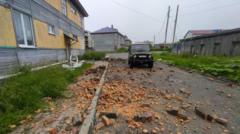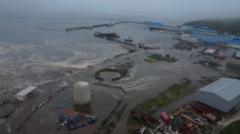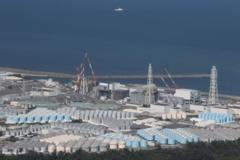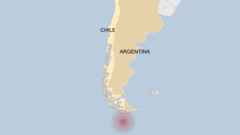This article delves into the causes of the recent powerful earthquake in Russia and examines factors that contributed to the surprisingly mild tsunami effects, despite the quake's intensity.
Russian Megaquake: Exploring Why Tsunami Damage Remains Limited

Russian Megaquake: Exploring Why Tsunami Damage Remains Limited
An 8.8-magnitude earthquake struck Russia’s Kamchatka Peninsula, raising tsunami fears without the catastrophic damage many anticipated.
On Wednesday, an earthquake with a magnitude of 8.8 hit the Kamchatka Peninsula in eastern Russia, igniting fears of widespread tsunami effects across the Pacific. Compared to past catastrophic events like the Indian Ocean tsunami in 2004 and Japan's 2011 disaster, the aftermath has been surprisingly subdued, prompting questions about why the expected tsunami was not as devastating.
The Kamchatka Peninsula lies in the "Pacific Ring of Fire," a region prone to earthquakes and volcanoes due to the interaction of tectonic plates. Here, the Pacific plate moves northwest at about 8 cm per year and interacts with the Okhotsk microplate. As the Pacific plate submerges beneath the microplate, buildup occurs from friction, resulting in megathrust earthquakes when this energy is finally released.
According to environmental seismology expert Dr. Stephen Hicks, such large earthquakes disrupt extensive fault lines, resulting in significant magnitudes. The region's history has shown it can produce great earthquakes, evidenced by a 9.0 magnitude quake recorded just 30 km from the recent event back in 1952.
Despite concerns, tsunami waves from the quake reached only 4 meters (approximately 13 feet) in some areas. In contrast, past tsunamis have reached dramatically higher heights. Professor Lisa McNeill highlighted that local seafloor conditions and coastal landscapes greatly influence tsunami wave height and potential inland penetration.
The earthquake's depth of around 20.7 km (12.9 miles) was relatively shallow and usually linked to greater tsunami displacement, but the models predicting wave heights might have conservative estimates. Dr. Hicks noted that if deeper estimates had been used, tsunami impact might have been even less severe.
Another significant factor in mitigating overall impact is the advancement in tsunami early warning systems across the Pacific. Countries in this region utilize monitoring centers that issue warnings and facilitate evacuations. This technology contrasts with the absence of systems during the 2004 Boxing Day tsunami, which caught many unprepared and resulted in a tragic loss of life.
As the Geophysical Survey of the Russian Academy of Sciences continues to monitor Kamchatka, experts caution that aftershocks are expected in the coming weeks, maintaining a watchful eye on the region's seismic activity.




















